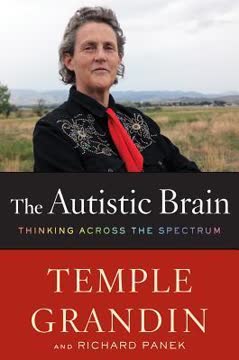つの重要なポイント
1. 自閉症は治療すべき障害ではなく、神経発達の違いである
自閉症は、私たちの世界における神経多様性の一つの源に過ぎない。
自閉症の再考。 自閉症は、感覚処理、社会的コミュニケーション、興味のパターンにおける違いを特徴とする神経学的状態である。治療すべき障害ではなく、人間の神経学における自然な変異としてますます理解されている。自閉症の脳は情報を異なる方法で処理し、しばしば細部への注意が高まり、ボトムアップ思考の傾向がある。
神経多様性のパラダイム。 この視点は、自閉症をADHD、ディスレクシア、双極性障害などの他の神経タイプと並んで人間の多様性の一部として捉える。これには以下のことが強調される:
- 違いを受け入れ、適応すること
- 自閉症に関連する課題と強みの両方を認識すること
- 医療的介入から社会的受容と支援へのシフト
神経多様性運動は、自閉症の受容を提唱し、脳が機能する「正常な」方法が一つだけであるという考えに挑戦する。このアプローチは、スティグマを減らし、自閉症の人々が自分の条件で繁栄できる包括的な環境を促進することを目指している。
2. マスキングは自閉症の特性を隠すが、高い個人的な代償を伴う
マスキングは、身体的な疲労、心理的な燃え尽き、うつ病、不安、さらには自殺念慮に寄与する疲れるパフォーマンスである。
マスキングの圧力。 多くの自閉症の人々は、神経典型的な社会に適応するために自然な特性や行動を隠すことを強いられている。この「マスキング」や「カモフラージュ」には以下のことが含まれる:
- スティム(自己刺激行動)の抑制
- 目を合わせることの強制
- 神経典型的な社会行動の模倣
- 特別な興味を隠すこと
マスキングの代償。 マスキングは、自閉症の人々が社会的状況や職場の期待に適応するのに役立つかもしれないが、重大な代償を伴う:
- 精神的な疲労と燃え尽き
- 不安とうつ病の増加
- 本来の自己表現の喪失
- 特に女性やマイノリティにおける自閉症の診断の遅れ
長期的なマスキングは、自閉症の燃え尽き症候群、すなわち慢性的な疲労、スキルの喪失、ストレスに対する耐性の低下を引き起こす可能性がある。マスキングの必要性を認識し、減少させることは、自閉症の人々の幸福と自己受容にとって重要である。
3. 自閉症の経験は広範であり、ステレオタイプやメディアの描写を超える
自閉症は特に多様で変化に富んだ神経多様性の一形態であり、私たちが規範から逸脱することで罰せられる方法は非常に多い。
多様な表現。 自閉症は個々の人々に異なる形で現れ、狭いステレオタイプに挑戦する。この多様性には以下が含まれる:
- コミュニケーションスタイル:話さない人から非常に雄弁な人まで
- 感覚体験:さまざまな刺激に対する過敏または鈍感
- 特別な興味:学術的な主題からポップカルチャーまで
- 社会的能力:社交的な人もいれば、孤独を好む人もいる
自閉症における交差性。 自閉症は他のアイデンティティの側面と相互作用する:
- 性別:女性、ノンバイナリー、トランスジェンダーの自閉症者の経験は異なる
- 人種と文化:自閉症は文化によって異なり、異なる見方をされる
- 併存する状態:多くの自閉症者はADHDや不安などの追加の診断を持っている
この多様性を認識することは、診断、支援、社会的理解の向上に不可欠である。それは単一の「自閉症の見た目」や行動の概念に挑戦し、支援と適応のための個別のアプローチの必要性を強調する。
4. 自己診断と自己実現は自閉症のアイデンティティへの有効な道である
私は自閉症の自己決定を強く支持する。自己診断よりも自己決定や自己実現という用語を好む。なぜなら、自閉症のアイデンティティを厳密な医療的な視点よりも社会的なレンズで見る方が理にかなっていると信じているからだ。
正式な診断への障壁。 多くの自閉症の人々、特に効果的にマスキングする人々は、公式な診断を受けるための障害に直面している:
- 高額な費用と限られた保険のカバー
- 長い待ち時間と資格のある専門家の不足
- 診断基準のバイアス、特に女性やマイノリティに対するもの
- 公式な診断のスティグマと潜在的なネガティブな結果
自己実現の価値。 公式な診断がなくても、自分が自閉症であることを認識することは変革的である:
- 生涯の苦労や違いに対する説明を提供する
- 自閉症コミュニティやリソースへのアクセスを可能にする
- 適応を求め、自己主張する力を与える
- 自閉症の狭い、医療化された見方に挑戦する
自己認識は自閉症コミュニティ内でますます受け入れられており、現在の診断システムが多くの自閉症の経験を捉えきれていないことを認識している。それは、医療ラベルよりも個人的な理解とコミュニティのつながりを強調する。
5. アンマスキングは自閉症の特性を受け入れ、個人的な価値観を再定義することを含む
アンマスキングとは、神経典型的な要求に屈しない誇り高い顔をさらけ出すことである。
本来の自己の再発見。 アンマスキングは、自分自身を本来の自閉症として許容するプロセスである。これには以下が含まれる:
- 内面化された能力主義に挑戦すること
- スティムや他の自然な自閉症行動を受け入れること
- 特別な興味を探求し、オープンに共有すること
- 感覚的および社会的なニーズに基づいて境界を設定すること
価値観の再定義。 アンマスキングはしばしば社会的期待と個人的な価値観を再評価することを必要とする:
- 成功と生産性の神経典型的な定義に疑問を投げかけること
- 適応よりも幸福と本来の自己を優先すること
- 自閉症の強みと視点を認識し、評価すること
アンマスキングは段階的でしばしば挑戦的なプロセスである。それは、より本来の自己で世界をナビゲートする方法を学ぶ過程で、脆弱性と調整の期間を伴うことがある。しかし、多くの自閉症者は、アンマスキングを通じて精神的健康と生活の質が大幅に向上したと報告している。
6. 自閉症に優しい生活を築くには、成功と時間の再考が必要である
生産性と成功を評価するために使用する時間枠を拡大し、人生の「長期的な視点」を持つこと。古いプロジェクトに戻ることや、役に立たない情熱を手放すことを恐れないでください。
生産性の再考。 伝統的な生産性の概念は、自閉症のニーズと強みにしばしば対立する。自閉症に優しいアプローチには以下が含まれるかもしれない:
- 集中的な集中期間(ハイパーフォーカス)と回復時間のバランスを取ること
- 固定されたスケジュールではなく、エネルギーレベルに基づいて仕事を構築すること
- 知識の深さと細部への注意を評価すること
自閉症に優しい環境。 自閉症の幸福をサポートする空間を作ること:
- 感覚に優しい改良(例:照明、音、テクスチャ)
- 明確なコミュニケーションと期待
- 社会的相互作用や仕事の取り決めにおける柔軟性
成功の再定義。 自閉症の人々にとっての成功は異なるかもしれない:
- 社会的なベンチマークよりも個人的な成長と幸福を優先すること
- 特別な興味の分野での成果を認識すること
- 社交的なつながりの量よりも本物の関係を評価すること
この再考は、仕事、社会生活、個人的な発展に関する深く根付いた社会的規範に挑戦することを伴う。それは、自閉症のニーズと強みに合った生活を作り出すことを強調し、神経典型的な基準に適応することを強制しない。
7. 神経多様性のある世界を作るには、システムの変革と広範な受容が必要である
すべての自閉症者がアンマスキングできる唯一の方法は、社会が劇的に変わることである。より柔軟な規範とスティグマの少ない世界は、よりアクセスしやすい世界であり、障害が少なく、人間の苦しみもはるかに少ない。
システム的な障壁。 自閉症の人々は多くの社会的障害に直面している:
- 多様な学習スタイルをサポートする準備ができていない教育システム
- 職場での差別と適応の欠如
- 自閉症のニーズを十分に理解していない医療システム
- 神経典型的なコミュニケーションスタイルを優先する社会的期待
変革への道。 より神経多様性に優しい世界を作るには以下が必要である:
- 自閉症の人々をよりよく保護し、サポートするための法律と政策の更新
- 医療、教育、法執行機関の専門家に対する自閉症教育の改善
- メディア、政治、意思決定の役割における自閉症の代表性の向上
- 神経多様性に対する一般の理解と受容の促進
すべての人に利益。 自閉症のニーズに対応する世界は、しばしばすべての人にとってよりアクセスしやすく快適なものになる:
- 明確なコミュニケーションはすべての神経タイプの人々に利益をもたらす
- 感覚に優しい空間は多くの人々のストレスを軽減する
- 柔軟な仕事の取り決めは全体的なワークライフバランスを改善する
最終的に、神経多様性を受け入れることは、自閉症の人々をサポートするだけでなく、すべての人々にとってより包括的で適応力のある、思いやりのある社会を作ることを意味する。
最終更新日:
FAQ
What's Unmasking Autism about?
- Exploration of Autism Spectrum: Unmasking Autism by Devon Price explores the complexities of Autism, focusing on the experiences of masked Autistics who hide their true selves to fit into neurotypical society.
- Personal Journey: The author shares their own late-life Autism diagnosis, highlighting struggles and societal pressures that lead to masking.
- Advocacy for Acceptance: The book advocates for a broader understanding of neurodiversity, encouraging readers to embrace their unique traits and challenge societal norms.
Why should I read Unmasking Autism?
- Insightful Perspectives: It offers valuable insights into the experiences of Autistic individuals, especially those overlooked or misdiagnosed due to societal biases.
- Empowerment and Self-Acceptance: The book provides tools and strategies for self-acceptance and unmasking, emphasizing the importance of living authentically.
- Cultural Relevance: With growing awareness of neurodiversity, this book is timely and relevant for understanding Autism beyond stereotypes.
What are the key takeaways of Unmasking Autism?
- Understanding Masked Autism: Introduces the concept of "masked Autism," where individuals camouflage traits to avoid stigma.
- The Cost of Masking: Discusses the emotional toll of masking, including anxiety, depression, and burnout, as a survival strategy.
- Community and Connection: Highlights the importance of finding community among Autistic individuals for self-acceptance and belonging.
What is "masked Autism" as defined in Unmasking Autism?
- Definition of Masked Autism: Refers to Autistic individuals who hide their traits to conform to societal expectations.
- Social Exclusion Factors: Factors like gender, race, and socioeconomic status contribute to the masking phenomenon.
- Consequences of Masking: Leads to mental health challenges, including depression and anxiety, due to maintaining an inauthentic façade.
How does Unmasking Autism redefine common stereotypes about Autism?
- Challenging Stereotypes: Argues that stereotypes, like lacking empathy, are overly simplistic and don't reflect the diversity within the Autistic community.
- Highlighting Strengths: Reframes traits viewed negatively, such as sensitivity, as valuable qualities.
- Cultural Context: Emphasizes that societal expectations shape Autism perceptions, crucial for fostering acceptance.
What are some strategies for unmasking mentioned in Unmasking Autism?
- Self-Reflection Exercises: Includes exercises like the "Values-Based Integration Process" to help readers reconnect with their true selves.
- Celebrating Special Interests: Emphasizes embracing special interests as a source of joy and identity.
- Building Community: Advocates for seeking supportive communities, like Autistic self-advocacy groups, to share experiences.
What are the psychological effects of masking discussed in Unmasking Autism?
- Increased Anxiety and Depression: Masking leads to heightened anxiety and depression due to pressure to conform.
- Emotional Exhaustion: The effort to mask one's true self results in emotional burnout and disconnection from identity.
- Self-Stigma: Many masked Autistics internalize negative stereotypes, leading to feelings of shame and inadequacy.
How does Unmasking Autism address the topic of self-advocacy?
- Empowerment Through Self-Advocacy: Emphasizes the importance of self-advocacy for Autistic individuals to foster a sense of agency.
- Practical Strategies: Provides advice on advocating for oneself, including clear communication of needs and boundaries.
- Building Supportive Networks: Highlights the value of connecting with other Autistic individuals and allies to strengthen advocacy efforts.
What is the significance of "radical visibility" in Unmasking Autism?
- Definition of Radical Visibility: Embracing and openly expressing one's Autistic identity without shame.
- Empowerment Through Expression: Discusses how radical visibility empowers individuals to take pride in their identity.
- Creating Inclusive Spaces: Advocates for environments that celebrate neurodiversity and accommodate different needs.
How does Unmasking Autism suggest building an Autistic life?
- Identifying Strengths and Values: Encourages reflection on strengths and values to build a fulfilling life.
- Divergent Design: Introduces creating environments that cater to Autistic sensory needs.
- Flexibility and Adaptation: Emphasizes the importance of flexible routines and environments aligned with individual needs.
What are some personal stories shared in Unmasking Autism?
- Crystal's Journey: A masked Autistic woman diagnosed in her late twenties, illustrating challenges faced by undiagnosed individuals.
- Timotheus's Experience: Discusses masking sensitivity and interests, highlighting the intersection of race and disability.
- Dorian's Struggles: Shares their journey with eating disorders and societal pressures, showcasing Autism's complex relationship with mental health.
What are the best quotes from Unmasking Autism and what do they mean?
- "Masking is an exhausting performance...": Highlights the toll of masking, emphasizing the need for acceptance.
- "Refusing to perform neurotypicality...": Stresses authenticity and self-acceptance as resistance against marginalization.
- "Being Autistic is a source of uniqueness...": Celebrates Autism as a valuable aspect of identity, not something to hide.
レビュー
本書『Unmasking Autism』は賛否両論の評価を受けている。自閉症とマスキングに関する洞察に満ちた探求を称賛する声がある一方で、ジェンダーアイデンティティに焦点を当てすぎており、科学的厳密さに欠けるとの批判もある。読者は多様な視点と実践的なエクササイズを評価しているが、内容の繰り返しや特定のサブグループに対する狭い焦点について指摘している。ある人々は本書を肯定的で有益だと感じる一方で、他の人々は自閉症を単純化し、広範な一般化を行っていると主張している。自己診断に対する立場やマスキングを解くアプローチは、レビューアーの間で議論を呼んでいる。
Similar Books












